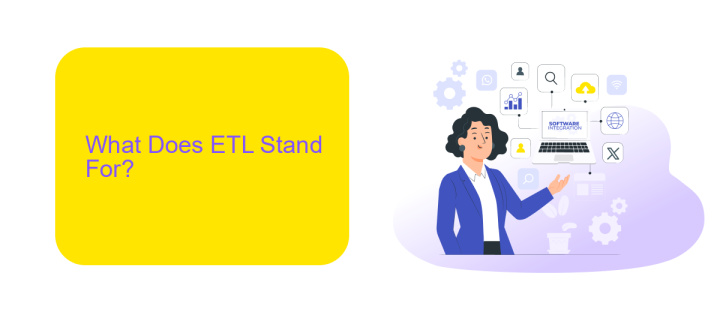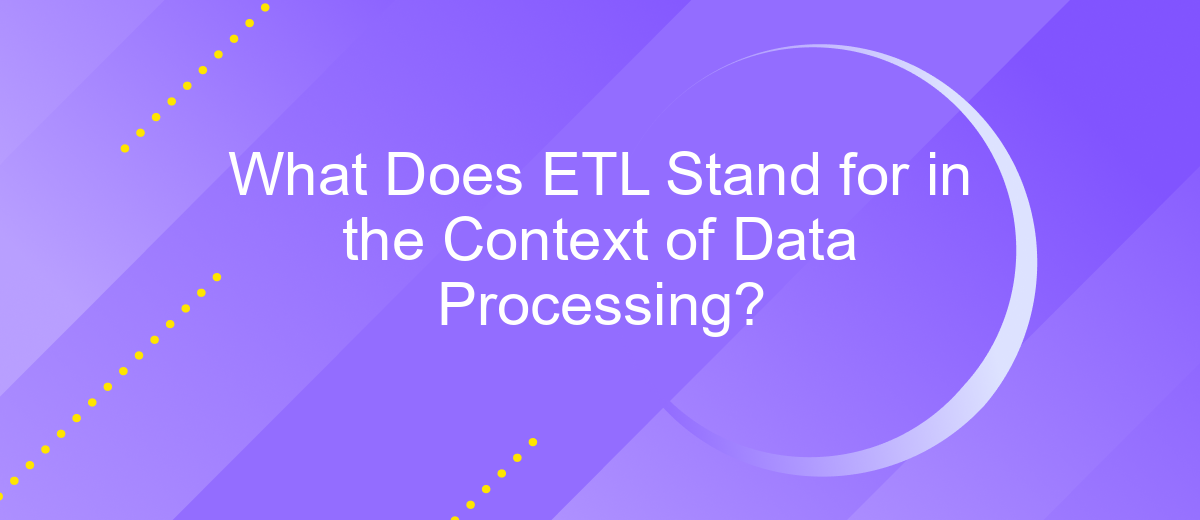What Does ETL Stand for in the Context of Data Processing?
ETL stands for Extract, Transform, Load, a crucial process in data processing and management. It involves extracting data from various sources, transforming it into a suitable format, and loading it into a data warehouse or other storage systems. ETL enables organizations to consolidate data, ensuring it is clean, consistent, and ready for analysis, driving informed decision-making.
Introduction
In the ever-evolving landscape of data processing, understanding the fundamentals of ETL (Extract, Transform, Load) is crucial. ETL is a process that enables organizations to gather data from various sources, convert it into a usable format, and load it into a data warehouse or database. This systematic approach ensures data consistency, quality, and accessibility, which are essential for making informed business decisions.
- Extract: The first step involves collecting raw data from multiple sources such as databases, APIs, and flat files.
- Transform: The gathered data is then cleansed, formatted, and transformed to meet the analytical requirements.
- Load: Finally, the processed data is loaded into a target data repository for analysis and reporting.
Services like ApiX-Drive play a pivotal role in streamlining ETL processes by automating data integration tasks. With ApiX-Drive, businesses can easily connect various data sources and automate data workflows, thereby enhancing efficiency and reducing the risk of errors. Understanding ETL and leveraging tools like ApiX-Drive can significantly improve data management and business intelligence capabilities.
What Does ETL Stand For?

ETL stands for Extract, Transform, Load, which are the three fundamental processes involved in data processing. In the extraction phase, data is collected from various sources such as databases, APIs, and flat files. This data is then transformed to fit the desired format, ensuring consistency, accuracy, and compatibility with the target system. Finally, the transformed data is loaded into a data warehouse, data lake, or another storage system where it can be analyzed and utilized for decision-making.
ETL plays a crucial role in integrating data from disparate sources, making it accessible and useful for businesses. Tools like ApiX-Drive simplify this process by automating data extraction, transformation, and loading. They offer pre-built connectors and customizable workflows, allowing organizations to seamlessly integrate various data sources without extensive coding. This streamlines data management, reduces errors, and enhances the efficiency of data-driven operations.
The ETL Process

The ETL process is a fundamental aspect of data processing that involves three main steps: Extract, Transform, and Load. This process is essential for consolidating data from various sources into a centralized data warehouse, thereby enabling more efficient data analysis and reporting.
- Extract: In this initial phase, data is collected from multiple sources such as databases, cloud services, and APIs. Tools like ApiX-Drive can simplify this step by automating the extraction of data from different platforms.
- Transform: Once the data is extracted, it needs to be cleaned and transformed to ensure it is in a suitable format for analysis. This might involve filtering, aggregating, or enriching the data to meet specific business requirements.
- Load: The final step involves loading the transformed data into a data warehouse or another storage system where it can be accessed for analysis and reporting.
By following these steps, businesses can ensure that their data is accurate, consistent, and readily available for decision-making purposes. Services like ApiX-Drive can significantly streamline the ETL process, reducing the time and effort required to manage data integrations.
Benefits of ETL

ETL (Extract, Transform, Load) offers numerous advantages in the realm of data processing. It streamlines the process of integrating data from various sources, ensuring that the data is clean, consistent, and ready for analysis. This is particularly beneficial for businesses that rely on accurate data to make informed decisions.
One of the key benefits of ETL is its ability to handle large volumes of data efficiently. By automating the extraction, transformation, and loading processes, ETL tools reduce the time and effort required to prepare data for analysis. This allows organizations to focus on deriving insights and making strategic decisions rather than dealing with data preparation.
- Improved data quality and consistency
- Faster data processing and integration
- Enhanced decision-making capabilities
- Scalability to handle growing data volumes
Additionally, services like ApiX-Drive can further simplify the ETL process by providing seamless integrations between various data sources and destinations. This allows businesses to automate their workflows and ensure that their data is always up-to-date and ready for analysis. By leveraging ETL and integration services, organizations can unlock the full potential of their data.
Conclusion
In conclusion, ETL (Extract, Transform, Load) is a crucial process in the realm of data processing, enabling organizations to effectively manage and utilize their data. By extracting data from various sources, transforming it into a usable format, and loading it into a destination system, businesses can ensure data consistency, accuracy, and accessibility. This process is fundamental for making data-driven decisions and gaining insights that drive growth and efficiency.
For companies looking to streamline their ETL processes, tools like ApiX-Drive can be invaluable. ApiX-Drive simplifies the integration of various data sources and automates the data transfer, reducing the manual effort and potential for errors. By leveraging such services, organizations can focus more on analyzing and utilizing their data rather than getting bogged down in the technicalities of data integration. Ultimately, a well-implemented ETL process, supported by robust tools, can significantly enhance an organization's data capabilities and overall performance.
FAQ
What does ETL stand for in the context of data processing?
Why is ETL important for businesses?
What are the main steps involved in the ETL process?
How can ETL processes be automated?
What are the benefits of using automated ETL tools?
Apix-Drive is a simple and efficient system connector that will help you automate routine tasks and optimize business processes. You can save time and money, direct these resources to more important purposes. Test ApiX-Drive and make sure that this tool will relieve your employees and after 5 minutes of settings your business will start working faster.

